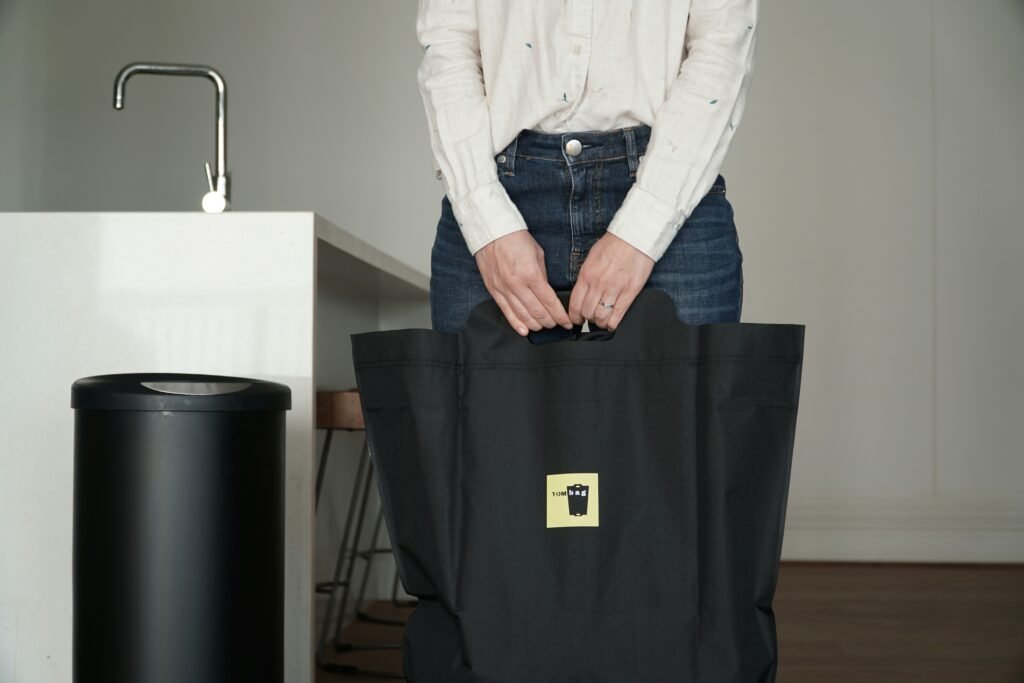A Sustainable Shift: Biodegradable Plastic Alternatives
Have you ever wondered about the impact of conventional plastic on our environment? We all know that plastic pollution is a significant issue, but what can we do as consumers to make a difference? In this article, we will explore biodegradable plastic alternatives that offer a sustainable solution to the plastic waste problem. Let’s dive in and learn more about how these alternatives can help protect our planet for future generations.

This image is property of images.unsplash.com.
What is Biodegradable Plastic?
You may have heard the term “biodegradable plastic,” but what does it really mean? Biodegradable plastic is a type of material that can break down naturally in the environment under specific conditions. Unlike traditional plastic, which can take hundreds of years to decompose, biodegradable plastic can degrade much faster, reducing its environmental impact significantly.
Biodegradable plastics are made from organic materials such as corn starch, sugarcane, or cellulose. These materials can be broken down by bacteria and other microorganisms in the environment, turning them into harmless byproducts like water, carbon dioxide, and organic matter.
How Does Biodegradable Plastic Work?
When biodegradable plastic is exposed to the right conditions, such as heat, moisture, and oxygen, microorganisms begin to break down the material through a process called biodegradation. During this process, enzymes secreted by microorganisms break down the polymer chains of the plastic, reducing it to simpler compounds that can be absorbed by living organisms or assimilated back into the natural environment.
This natural breakdown process is much faster than the degradation of traditional plastics, which rely on physical forces like sunlight and mechanical abrasion to fragment into smaller pieces. Biodegradable plastics offer a more sustainable solution to plastic waste by reducing the amount of plastic debris that accumulates in our oceans, landfills, and natural habitats.
Types of Biodegradable Plastic Alternatives
There are several types of biodegradable plastic alternatives available on the market, each with its own unique properties and applications. Let’s take a closer look at some common options and how they can be used as sustainable alternatives to conventional plastics.
1. PLA (Polylactic Acid)
PLA, or polylactic acid, is a biodegradable polymer made from renewable resources such as corn starch or sugarcane. It is commonly used in the production of food packaging, disposable utensils, and biodegradable bags. PLA has similar properties to traditional plastics like PET (polyethylene terephthalate) but can be composted in industrial composting facilities, where it breaks down into natural compounds without leaving behind harmful residues.
2. PBAT (Polybutylene Adipate Terephthalate)
PBAT is a biodegradable copolymer made from petrochemical and biological sources. It is often used in the production of compostable bags, mulch films, and agricultural applications. PBAT is designed to biodegrade under composting conditions, where it will decompose into carbon dioxide, water, and biomass, leaving behind no visible residues.
3. PHA (Polyhydroxyalkanoates)
PHA is a family of biodegradable polymers produced by microorganisms through fermentation processes. These bioplastics are versatile and can be used in a wide range of applications, including food packaging, medical devices, and agricultural materials. PHA bioplastics biodegrade naturally in various environments, making them a sustainable alternative to traditional plastics that can withstand harsh conditions.
4. Starch-Based Plastics
Starch-based plastics are derived from renewable resources like corn, potatoes, or cassava. These biodegradable materials can be used in a variety of products, including packaging films, foam packaging, and disposable tableware. Starch-based plastics are compostable and can be broken down into organic matter by microorganisms in industrial composting facilities, reducing their impact on the environment.

This image is property of images.unsplash.com.
Benefits of Biodegradable Plastics
Switching to biodegradable plastic alternatives offers a wide range of benefits for the environment, human health, and the economy. Let’s explore some of the advantages of using biodegradable plastics over traditional plastics to understand why they are a sustainable choice for a greener future.
Environmental Benefits
Biodegradable plastics help reduce plastic pollution by breaking down into natural compounds that are non-toxic to the environment. Unlike traditional plastics, which can persist in the environment for centuries, biodegradable plastics degrade faster and do not leave behind harmful residues or microplastics. By choosing biodegradable plastic alternatives, you can help protect ecosystems, wildlife, and marine life from the damaging effects of plastic pollution.
Human Health Benefits
Conventional plastics contain harmful chemicals like BPA (bisphenol A) and phthalates, which can leach into food and water, posing health risks to humans. Biodegradable plastics are free from toxic additives and are safer for food contact applications, reducing the risk of chemical exposure and contamination. By using biodegradable plastic products, you can protect yourself and your loved ones from potential health hazards associated with conventional plastics.
Economic Benefits
The production and disposal of traditional plastics have significant environmental and economic costs, from raw material extraction to waste management and recycling. Biodegradable plastics offer a more sustainable and cost-effective solution by using renewable resources, reducing greenhouse gas emissions, and minimizing waste disposal expenses. Investing in biodegradable plastic alternatives can create new opportunities for green innovation, job creation, and economic growth in the circular economy.
Challenges of Biodegradable Plastics
While biodegradable plastics offer many benefits as sustainable alternatives to traditional plastics, they also face several challenges that need to be addressed to promote widespread adoption and scale-up of these materials. Let’s discuss some of the key challenges of biodegradable plastics and how we can overcome them to create a more sustainable future.
Composting Infrastructure
One of the main challenges of biodegradable plastics is the lack of adequate composting infrastructure to support their disposal and degradation. Industrial composting facilities are necessary to break down biodegradable plastics into natural compounds efficiently, but many regions lack the necessary infrastructure and regulations to manage these materials properly. Increasing investment in composting facilities, educating consumers about composting practices, and implementing composting mandates can help improve the composting infrastructure and promote the widespread adoption of biodegradable plastics.
Contamination and Sorting
Contamination and sorting of biodegradable plastics pose challenges in the recycling and waste management processes, as these materials can often be mistaken for traditional plastics and vice versa. Proper labeling, certification, and standardization of biodegradable plastics can help improve the identification and sorting of these materials, ensuring they are properly disposed of and recycled. Educating consumers, manufacturers, and waste management operators about the differences between biodegradable and traditional plastics is crucial to prevent contamination and promote the circularity of biodegradable materials.
Performance and Durability
Some biodegradable plastics may have lower performance and durability compared to traditional plastics, limiting their applications in certain industries and products. Research and development efforts are underway to enhance the mechanical properties, shelf life, and heat resistance of biodegradable plastics, making them suitable for a broader range of applications and industries. By improving the performance and durability of biodegradable plastics, we can expand their market potential and accelerate the transition to a circular economy based on sustainable materials.

This image is property of images.unsplash.com.
How You Can Support Biodegradable Plastic Alternatives
As a conscious consumer, you have the power to make a positive impact on the environment by choosing biodegradable plastic alternatives over traditional plastics. Here are some simple steps you can take to support the adoption of biodegradable plastics and promote sustainability in your daily life:
Reduce, Reuse, Recycle
Practice the 3 R’s of sustainability by reducing your plastic consumption, reusing products whenever possible, and recycling materials to prevent waste and promote circularity. Choose biodegradable plastic products that are compostable, recyclable, or made from renewable resources to minimize your environmental footprint and support the shift towards a more sustainable future.
Educate Yourself and Others
Stay informed about the environmental impact of conventional plastics and the benefits of biodegradable alternatives to make informed choices as a consumer. Share your knowledge with friends, family, and community members to raise awareness about the importance of sustainable materials and the role they play in protecting the planet. By educating yourself and others, you can inspire positive change and encourage more people to embrace biodegradable plastic alternatives.
Support Green Businesses and Initiatives
Choose to support green businesses and initiatives that prioritize sustainability, innovation, and social responsibility in their practices and products. Look for eco-friendly certifications, labels, and endorsements that verify the biodegradability and compostability of plastic alternatives to ensure you are making a positive impact with your purchasing decisions. By supporting green businesses and initiatives, you can help drive market demand for biodegradable plastics and accelerate the transition to a circular economy based on sustainable materials.
Conclusion
In conclusion, biodegradable plastic alternatives offer a sustainable solution to the plastic waste problem by reducing pollution, protecting ecosystems, and promoting a circular economy based on renewable resources. By choosing biodegradable plastics over traditional plastics, you can support a greener future for our planet and contribute to a more sustainable and resilient society for generations to come. Together, we can make a positive impact on the environment and create a more sustainable world for all. Thank you for joining us on this journey towards a sustainable shift in plastic consumption.
